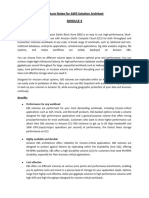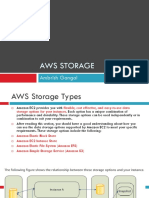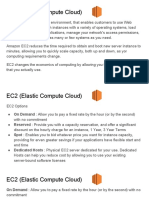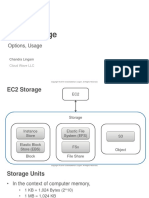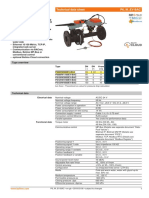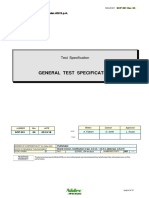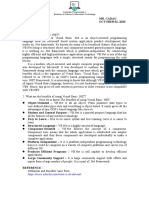0% found this document useful (0 votes)
41 views5 pagesCreating Ami
The document discusses Amazon Machine Images (AMIs). An AMI is a virtual image used to launch EC2 instances and provides a template for the root volume. The document covers AMI lifecycle, types (EBS-backed and instance store-backed), and differences between the two types including cost, data persistence, and boot time.
Uploaded by
BharathCopyright
© © All Rights Reserved
We take content rights seriously. If you suspect this is your content, claim it here.
Available Formats
Download as TXT, PDF, TXT or read online on Scribd
0% found this document useful (0 votes)
41 views5 pagesCreating Ami
The document discusses Amazon Machine Images (AMIs). An AMI is a virtual image used to launch EC2 instances and provides a template for the root volume. The document covers AMI lifecycle, types (EBS-backed and instance store-backed), and differences between the two types including cost, data persistence, and boot time.
Uploaded by
BharathCopyright
© © All Rights Reserved
We take content rights seriously. If you suspect this is your content, claim it here.
Available Formats
Download as TXT, PDF, TXT or read online on Scribd
/ 5





